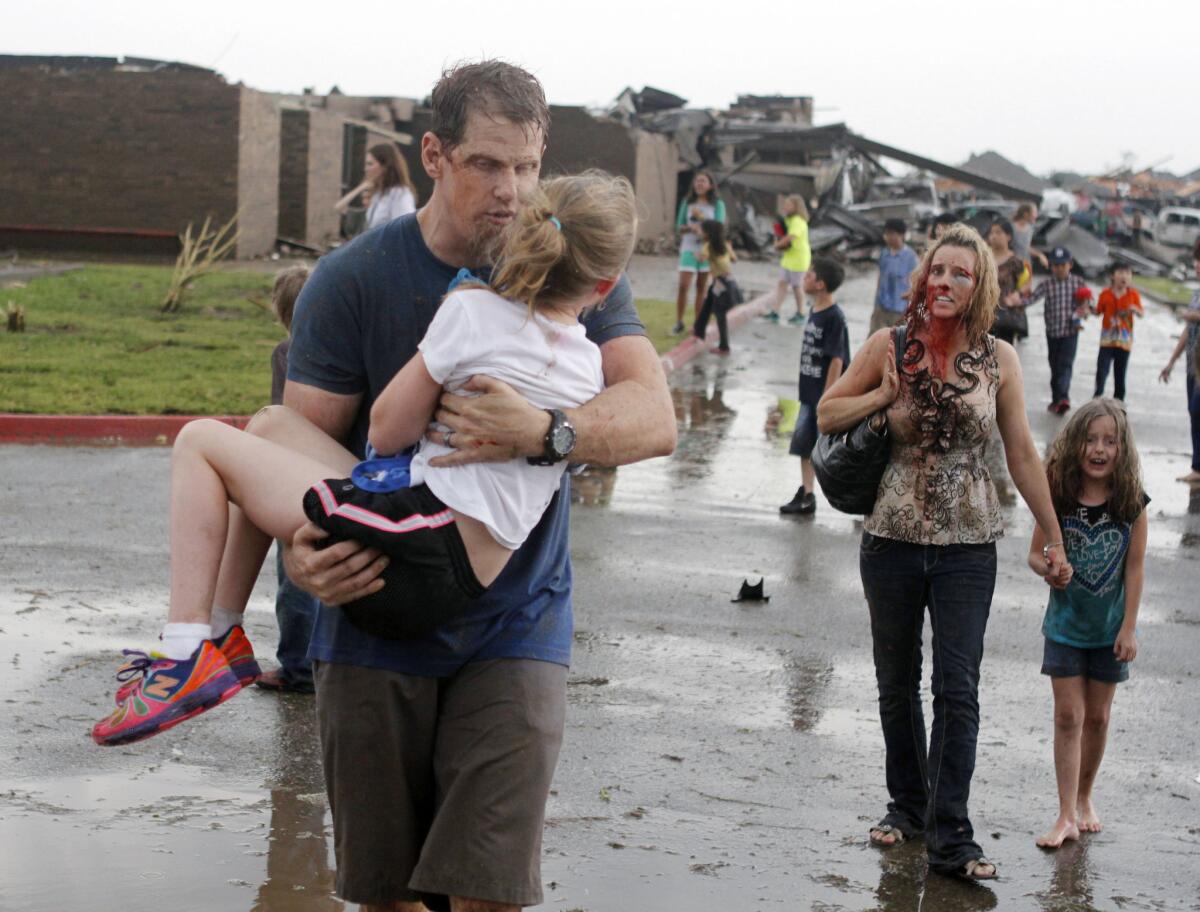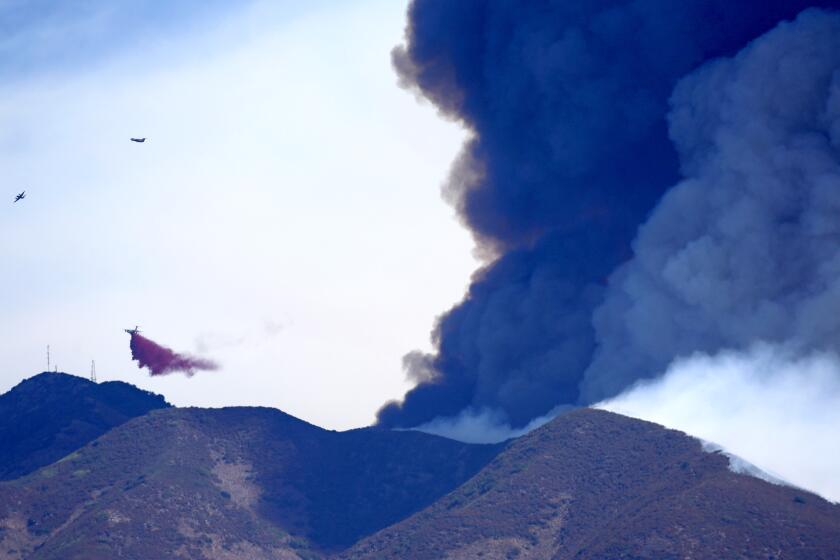Opinion: Who should pay to guard schoolchildren against Mother Nature?

California has earthquakes, Oklahoma has tornadoes. In either place, the odds are that you’ll never be at ground zero when distaster strikes, or even directly affected by one. But if you are one of the unlucky few (statistically speaking, that is) to experience a powerful quake or tornado, there’s a very strong chance the results will be devastating.
So, who should be responsible for protecting you? The question is being raised frequently these days in California and Oklahoma, and the answer depends largely on where you’re spending your time. As a society, we’ve decided that homeowners should cover their own insurance costs, albeit with subsidies for some people in flood-prone areas. But it’s not entirely clear yet who should pick up the tab for making sure people are safe in buildings they don’t own.
As The Times noted Monday, a California appeals court has held that the owners of a building known to be seismically risky can be held liable for injuries suffered when a quake causes it to collapse. That’s true even if the quake happens before the deadline local officials have set for making upgrades.
San Francisco and Santa Monica have already mandated retrofitting of certain buildings, and Los Angeles is heading down a similar path for buildings with newly discovered seismic risks. That doesn’t settle the issue, however. Because the cost of retrofitting those buildings is so great, policymakers have floated a variety of proposals for ways to help finance the work. These include letting owners pass along more of the costs to tenants in rent-controlled buildings and using government bonds to finance low-interest construction loans.
Those are some of the issues surrounding privately owned buildlings. You’d think public buildings would be an easier case: as the owner, the government should pay for the upgrades or be held liable for any injuries if it doesn’t. But even there one important question arises: which government picks up the tab?
Consider the case presented by public schools in Oklahoma. A year after a tornado killed seven students in an elementary school in Moore, Okla., a faction led by Republican Gov. Mary Fallin is pushing a constitutional amendment that would let local school districts borrow money to build shelters. The local bonds would be repaid through higher local property taxes. Another faction, led by Rep. Joe Dorman, a Democrat who’s running against Fallin, is supporting a ballot measure to have the state cover much of the shelters’ cost by issuing bonds. That approach would by financed by an existing state tax on businesses and, if necessary, appropriations from the state’s general revenue fund.
Asking local property owners to pay for sheltering the children in their region has a certain logic to it; as proponents note, some districts already have made the investment in shelters, so why should residents in those communities have to pay again? But the reason courts have frowned on school financing schemes that rely entirely on local funding is that they favor prosperous areas over poor and rural ones. The same reasoning applies here: no child is more or less deserving than any other when it comes to safe schools.
Dorman’s group, called Take Shelter Oklahoma, gathered enough signatures to get its proposal on the November ballot. But after Republican Atty. Gn. Scott Pruitt rewrote the measure’s ballot summary, giving more attention to the diversion of the business tax dollars out of the general revenue fund, Take Shelter Oklahoma started crafting another proposal that might raise fewer hackles among voters. Meanwhile, the legislature is still working on the proposed amendment that Fallin backs.
It’s worth debating what’s the most fiscally responsible approach to building shelters: that is, whether to raise more money or to fund the projects from existing tax revenue. But leaving schoolchildren’s safety up to the whims (and resources) of local voters is the wrong way to go. You’d think that would be an easy call.
More to Read
A cure for the common opinion
Get thought-provoking perspectives with our weekly newsletter.
You may occasionally receive promotional content from the Los Angeles Times.











